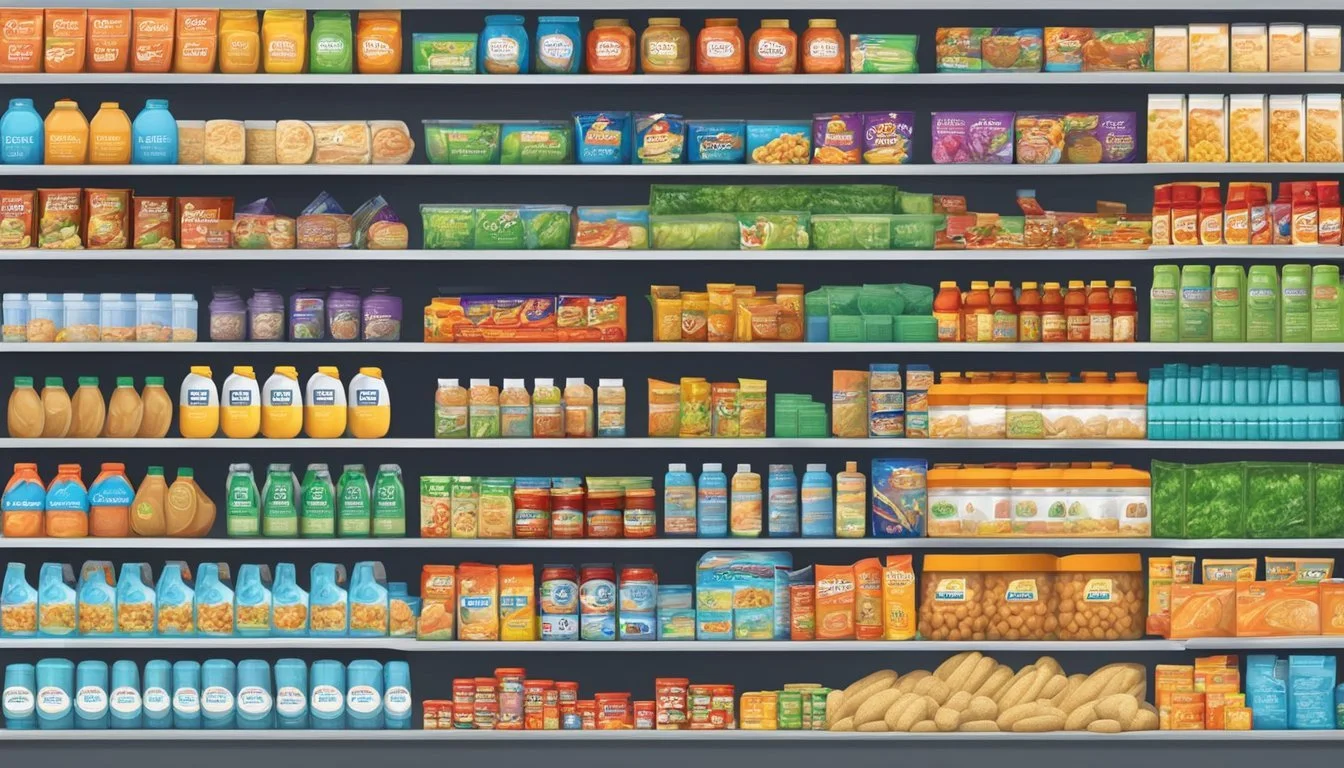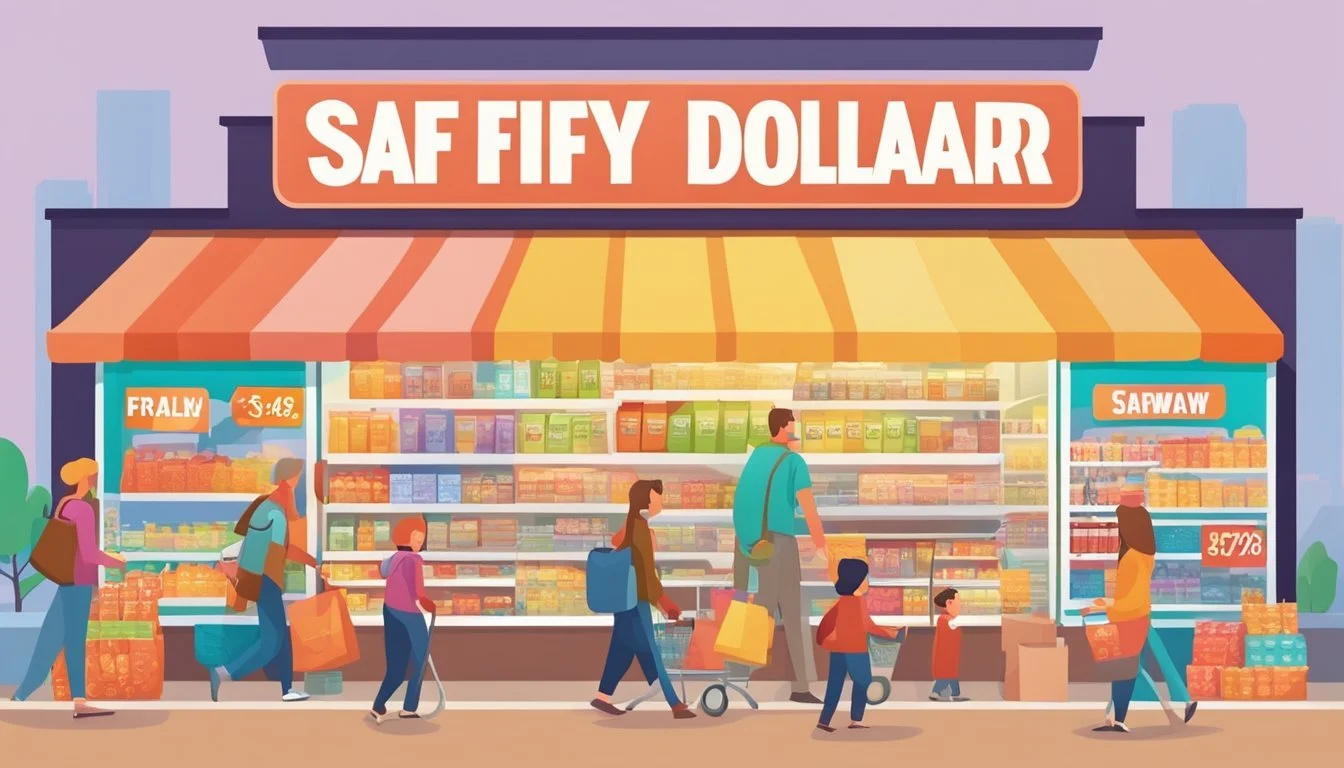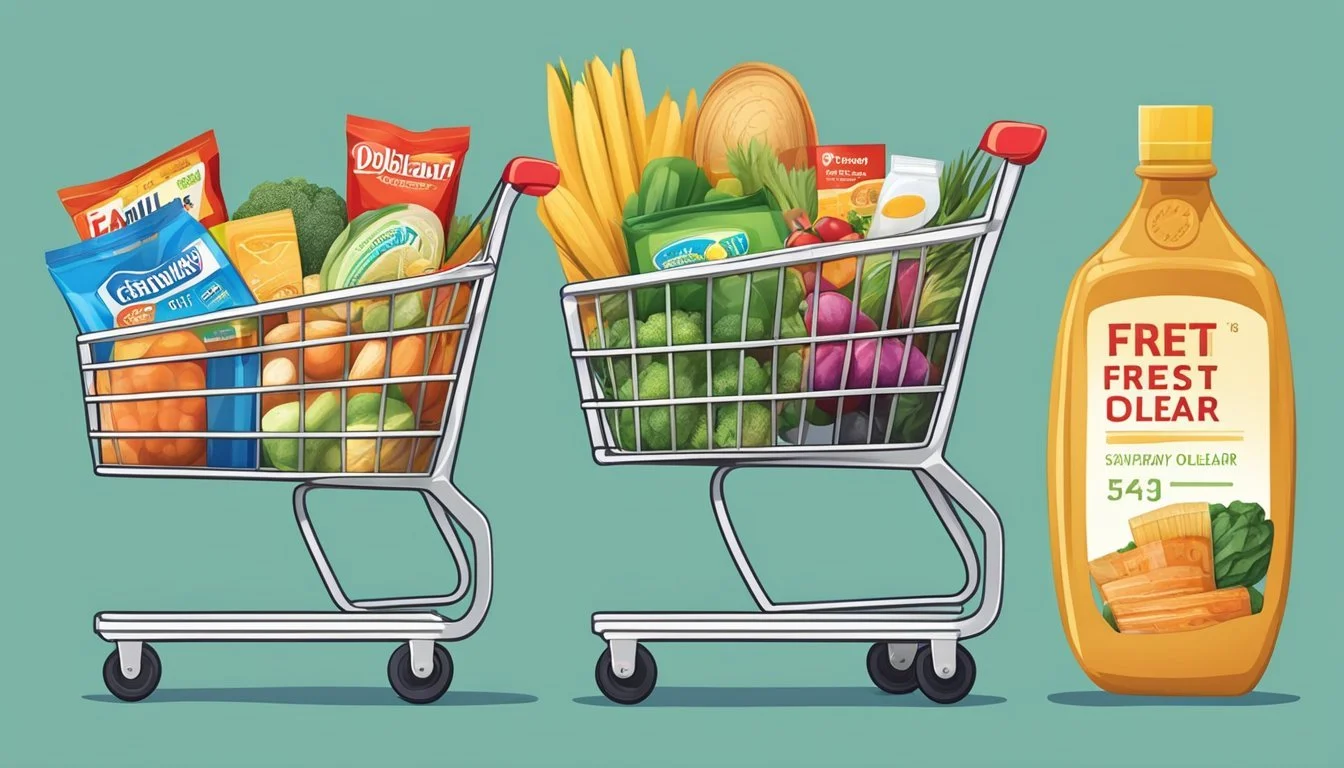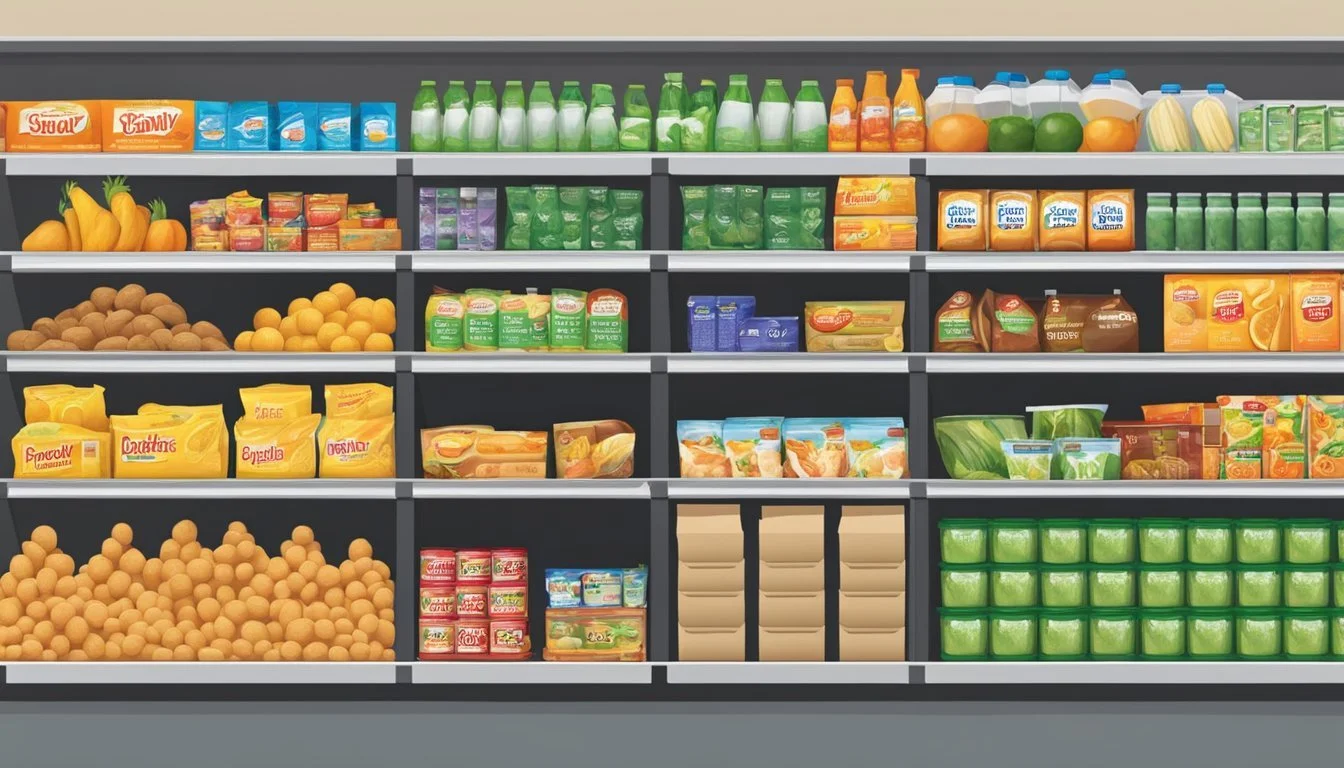Is Family Dollar Cheaper Than Safeway?
A price comparison of budget stores
When it comes to grocery shopping, finding the best deals can make a significant difference in your budget. Many shoppers wonder if Family Dollar offers better prices than traditional supermarkets like Safeway.
While Family Dollar generally has lower prices on many items compared to Safeway, the overall cost savings depend on what you're buying and how much. Family Dollar specializes in discounted household goods, personal care items, and packaged foods, often offering these at lower prices than larger supermarkets.
Safeway, on the other hand, provides a wider selection of fresh produce, meats, and specialty items that Family Dollar typically doesn't carry. For a full grocery run including fresh foods, Safeway may be necessary despite potentially higher prices on some items. The choice between the two stores often comes down to individual shopping needs and preferences.
Comparing Family Dollar and Safeway
Family Dollar and Safeway offer distinct shopping experiences, with differences in pricing, product selection, and store formats. Their contrasting business models cater to different consumer needs and preferences.
Overview of Family Dollar
Family Dollar operates as a discount variety store chain. It focuses on offering everyday essentials at low prices. The stores are typically smaller than traditional supermarkets, averaging around 7,000 square feet.
Family Dollar carries a mix of groceries, household items, and personal care products. Their inventory includes both name-brand and private-label options. The stores are designed for quick, convenient shopping trips.
Many Family Dollar locations are found in urban and rural areas. This positioning allows them to serve communities that may have limited access to larger retailers.
Overview of Safeway
Safeway is a full-service supermarket chain. It provides a comprehensive grocery shopping experience in larger store formats, often exceeding 50,000 square feet.
The stores offer a wide range of products, including fresh produce, meats, bakery items, and prepared foods. Safeway also carries household goods, personal care items, and sometimes includes pharmacies or fuel stations.
Safeway emphasizes quality and variety. It caters to shoppers looking for a one-stop shopping experience. The chain frequently runs promotions and has a customer loyalty program.
Price Comparison Fundamentals
Family Dollar generally offers lower prices on many items compared to Safeway. This pricing strategy is a core part of their business model.
Common household items and non-perishable foods are often cheaper at Family Dollar. For example:
Cleaning supplies: 10-20% less
Canned goods: 15-25% less
Personal care items: 10-30% less
Safeway's prices are typically higher, but they offer a broader range of products and brands. Their sales and loyalty program can provide significant discounts, sometimes matching or beating Family Dollar's prices on select items.
Product Quality and Selection
Family Dollar focuses on affordability over variety. Their selection is more limited but covers essential items. The quality of products is generally acceptable for the price point.
Key points about Family Dollar's selection:
Limited fresh produce
Fewer organic options
More private-label products
Safeway offers a much wider selection, including:
Extensive fresh produce department
Large variety of organic and specialty foods
Full-service deli and bakery
Wide range of national brands
Safeway's products often have higher perceived quality, especially in fresh departments. This quality difference is reflected in the pricing.
Price Points Across Different Categories
Family Dollar and Safeway offer distinct pricing strategies across various product categories. Their approaches to pricing groceries, produce, meat, and dairy items can significantly impact shoppers' budgets and choices.
Groceries and Staples
Family Dollar focuses on providing low-cost options for everyday essentials. Their pricing on non-perishable items like canned goods, pasta, and cleaning supplies is often lower than Safeway's. A typical box of cereal at Family Dollar might cost $2.50, while the same brand at Safeway could be priced at $3.50 or more.
Family Dollar's house brands offer additional savings, with prices up to 30% less than national brands. Safeway, however, provides a wider selection of premium and specialty items alongside their budget options. Their loyalty program and weekly sales can bring prices closer to Family Dollar's on select items.
Produce and Organic Options
Safeway generally outperforms Family Dollar in this category. While Family Dollar offers a limited selection of fresh produce at competitive prices, Safeway provides a more extensive range of fruits and vegetables. Safeway's produce section includes organic options, which are typically priced 10-30% higher than conventional produce.
Family Dollar's produce offerings are more basic, focusing on popular items like apples, bananas, and potatoes. Their prices on these staples can be lower than Safeway's, but the selection is narrower.
Safeway's organic produce selection is significantly larger, catering to health-conscious consumers willing to pay a premium for organic options.
Meat and Deli
Safeway offers a full-service meat and deli department, while Family Dollar's options are limited to pre-packaged meats. Safeway's pricing on fresh meats is generally higher, but they provide a wider variety of cuts and qualities. A pound of ground beef at Safeway might cost $4.99, compared to $3.99 for a pre-packaged version at Family Dollar.
Safeway's deli counter offers sliced meats and cheeses, prepared foods, and rotisserie chickens. These items are not available at Family Dollar. Safeway's frequent sales on meat products can make their prices more competitive, especially for bulk purchases.
Dairy and Frozen Foods
Both stores offer dairy products, but Safeway's selection is more extensive. Family Dollar's pricing on milk, eggs, and cheese is often lower. A gallon of milk at Family Dollar might be priced at $2.99, while Safeway's price could be $3.49.
Safeway carries a broader range of yogurt brands and specialty dairy items. Their frozen food section is also more comprehensive, including premium ice creams and organic frozen vegetables. Family Dollar's frozen food options focus on budget-friendly meals and basic vegetables.
Family Dollar's pricing on frozen pizzas and TV dinners is typically lower than Safeway's. However, Safeway offers more variety in frozen meals, including healthier and gourmet options at higher price points.
Discounts, Deals, and Savings Programs
Family Dollar and Safeway offer various ways for customers to save money on their purchases. Both stores employ different strategies to provide value, from weekly sales to loyalty programs.
Weekly Ads and Sales
Family Dollar releases weekly ads featuring discounted items across multiple departments. These deals typically run from Sunday to Saturday. Customers can find these ads in-store, online, or through the Family Dollar app.
Safeway also publishes weekly ads with special offers. Their sales often include deeper discounts on select items for loyalty program members. Safeway's digital coupons can be added to a customer's account and automatically applied at checkout.
Both stores frequently offer buy-one-get-one (BOGO) deals on various products. Family Dollar sometimes provides dollar-off coupons for specific purchase amounts, while Safeway may offer percentage discounts on entire product categories.
Store Brands vs. National Brands
Family Dollar carries a mix of national brands and its own private labels. Their store brands, such as Family Gourmet and Family Chef, often offer lower prices compared to name-brand equivalents.
Safeway's private label products include O Organics, Signature SELECT, and Lucerne. These store brands typically provide savings of 10-30% compared to national brands.
Both retailers strategically price their store brands to offer value while maintaining profit margins. However, Safeway tends to have a wider selection of private label items across more categories than Family Dollar.
Membership and Rewards Programs
Family Dollar does not currently offer a formal membership or rewards program. However, they provide a mobile app with digital coupons and exclusive deals for users.
Safeway's loyalty program, Safeway for U, offers personalized deals based on shopping history. Members earn points on purchases that can be redeemed for discounts on groceries or gas.
The Safeway program also includes digital coupons accessible through their app or website. As customers use the program more frequently, they can access enhanced savings through rewards and member-only pricing on select items.
Service and Convenience Comparison
Family Dollar and Safeway offer distinct experiences in terms of service and convenience. Their approaches differ significantly in store locations, delivery options, and customer services.
Store Location and Accessibility
Family Dollar focuses on urban and rural areas, often in lower-income neighborhoods. These stores are typically smaller, making them easy to navigate quickly. Many locations have extended hours, including evenings and weekends.
Safeway stores are generally larger and found in suburban areas and city centers. They offer spacious parking lots and are often anchor stores in shopping centers. Safeway's locations are less numerous but more spread out geographically.
Both chains prioritize accessibility, but Family Dollar's smaller footprint allows for more locations in densely populated areas.
Grocery Delivery and Pickup Options
Safeway excels in this area, offering robust online ordering systems for both delivery and pickup. Customers can choose from same-day delivery or schedule future deliveries. Safeway also provides curbside pickup at most locations.
Family Dollar has limited delivery options. Some stores partner with third-party services like Instacart for delivery, but this isn't available at all locations. Family Dollar doesn't offer dedicated curbside pickup services.
For those prioritizing delivery convenience, Safeway clearly has the edge.
Customer Experience and Services
Safeway provides a full-service grocery experience. Stores often include:
Pharmacy
Deli counter
Bakery
Floral department
Customer service desk
Many Safeway locations also offer fuel points programs and in-store banking services.
Family Dollar focuses on a no-frills shopping experience. Stores are designed for quick trips and impulse purchases. Services are limited, but some locations offer:
Western Union money transfers
Bill pay services
Basic household goods
Safeway aims for a comprehensive shopping experience, while Family Dollar prioritizes speed and simplicity.
Consumer Shopping Behavior
Consumers employ various strategies when shopping at different stores to maximize value and meet their needs. Budget considerations and product preferences play key roles in shaping shopping habits and choices.
Budget Planning and Preferences
Shoppers often create budgets to manage their grocery spending. Many compare prices between stores like Family Dollar and Safeway to find the best deals. Some consumers prioritize low prices, while others focus on product quality or brand loyalty.
Store-brand items have gained popularity as a cost-saving measure. Shoppers frequently switch between name brands and generic alternatives to balance price and quality. Sales, coupons, and loyalty programs also influence purchasing decisions.
Consumers may split their shopping between multiple stores. They might buy non-perishables at discount chains and fresh produce at traditional supermarkets. This strategy allows them to optimize their spending across different product categories.
Common Shopping Lists and Households Items
Typical household shopping lists include staple foods, cleaning supplies, and personal care items. Consumers often buy in bulk for frequently used products to save money over time.
Popular grocery items:
Milk, eggs, bread
Fruits and vegetables
Meat and poultry
Pasta and rice
Canned goods
Non-food essentials:
Toilet paper and paper towels
Laundry detergent
Dish soap
Toothpaste and soap
Shoppers tend to compare prices on these common items between stores. They may develop routines, buying certain products at specific stores based on perceived value or quality. Family size and dietary preferences also influence shopping lists and store choices.
Retail Landscape and Market Analysis
The retail grocery sector features diverse competitors vying for consumer dollars. Price, quality, and convenience shape shopper preferences across discount stores, traditional supermarkets, and specialty grocers.
Comparison with Other Retailers
Family Dollar and Safeway occupy different segments of the grocery market. Family Dollar focuses on discount offerings, while Safeway provides a full-service supermarket experience. Walmart and Target compete as one-stop shops with expansive grocery sections. Kroger and Whole Foods target different price points and product assortments.
Discount chains like Dollar General and Aldi emphasize low prices on a limited selection. Traditional grocers such as Publix and Market Basket aim for a middle ground of value and variety. Specialty retailers like Sprouts Farmers Market cater to health-conscious consumers.
Online players like Amazon are reshaping grocery retail through e-commerce and delivery options. Regional chains such as WinCo, Grocery Outlet, and Lucky carve out niches in specific markets.
Trends Affecting Grocery Chains
Consumer preferences are shifting toward convenience and value. Many shoppers split their grocery trips between multiple stores to optimize savings. Digital coupons and loyalty programs influence purchasing decisions.
Private label products are gaining market share as retailers develop high-quality store brands. Organic and natural foods continue to grow in popularity across price points. Prepared meals and grab-and-go options cater to busy lifestyles.
E-commerce and home delivery are expanding rapidly in the grocery sector. Some chains are experimenting with smaller format stores to enter urban markets. Self-checkout and cashierless technologies aim to reduce labor costs and checkout times.
Conclusion
Family Dollar and Safeway cater to different shopping needs and budgets. Family Dollar often provides lower prices on everyday essentials and household items. Their limited selection focuses on affordable options.
Safeway offers a wider range of products, including fresh produce, meats, and specialty items. While generally pricier, Safeway frequently runs sales and promotions that can yield significant savings.
The best choice depends on individual preferences and shopping habits. Family Dollar suits those seeking basic items at consistently low prices. Safeway appeals to shoppers wanting more variety and higher-quality fresh foods.
Both stores have their strengths. Family Dollar excels in affordability for common household goods. Safeway shines with its broader selection and frequent discounts on various products.
Ultimately, savvy shoppers may benefit from utilizing both stores. Purchasing staples and non-perishables at Family Dollar while getting fresh items and taking advantage of sales at Safeway can maximize savings and satisfaction.









